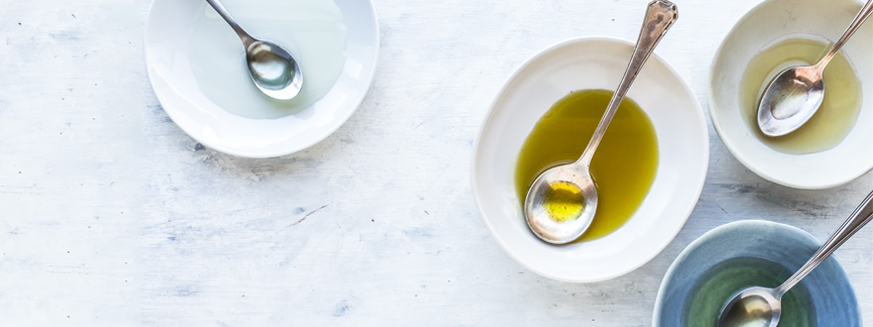The Fresh Blog
Lifestyle, Health, Nutrition & Inspiration from Luvo
Guide to Oils
They are the glue that binds many of our meals together, providing flavor, texture and a means to cook our favorite foods. Oils are indispensable in the kitchen, but which ones do you need, and what’s the difference between the various types? Read on, my friends. Read on.
Oils are used in almost every aspect of food preparation, from sautéing and stir frying to making dressings for salad and sauces (we’ve previously written about them here). Oil can be heated to a much higher temperature than water, helping us cook foods and give them a delicious golden crust. Oil and other fats also taste good, and can help enhance other flavors in dishes. But the different types of oils on the supermarket shelves have very different properties. Let’s investigate.
Olive
Raise your hand if you haven’t used olive oil in the past week. I knew it, not a single hand. Whether you’re sautéing vegetables or pan-frying chops, we often reach for the olive oil, which is well and good, but beware: extra-virgin olive oil has a relatively low smoke point—the point at which the oil begins to break down and start to smoke and is not longer fit for consumption. Many cooks suggest that olive oil is best for dishes where the taste will emerge, drizzled over salad or soup, or for sopping up bread. You can still use it to deep-fry , but make sure you keep the temperature fairly low.
Olive oil comes in many grades and varieties: Virgin olive oil means it was produced mechanically, with no chemical treatment, and extra-virgin oil is a high quality with low free oleic acid. There are many claims about the health benefits of olive oil, such as its ability to increase “good” HDL cholesterol, but the science is not conclusive.
Canola
Canola oil comes from the canola plant—a cultivar of rapeseed—and you may have seen the bright yellow flowers in farmers’ fields if you’ve driven through rural North America. It has a higher smoke point than olive oil, making it a better choice if you’re going hot, though others are better for deep-frying. Canola oil has a neutral flavor that makes it a good complement to many recipes. It’s high in linolenic acid, an omega-3 fat linked to cardiovascular health.
Sunflower
Another popular option is sunflower oil, which is the oil from pressed sunflower seeds. It has a light color, a mild flavor and a fairly high smoke point—higher than olive and canola oils. Many potato chip brands use sunflower oil, so it must be doing something right.
Coconut
Coconut oil is big right now. It is super high in saturated fat, which makes it less heart healthy than other oils, but it has a long shelf life. It has a low smoke point, so it’s best for low- to medium-heat frying and baking. Also, a lot of people are putting it on their faces.
Peanut
Peanut oil is built for deep-frying. It has a high smoke point, which means it can take the heat. It’s commonly used in many types of Asian cooking.
What’s your favorite type of oil to cook with? Share your tips in the comments and on Twitter at @luvoinc.


